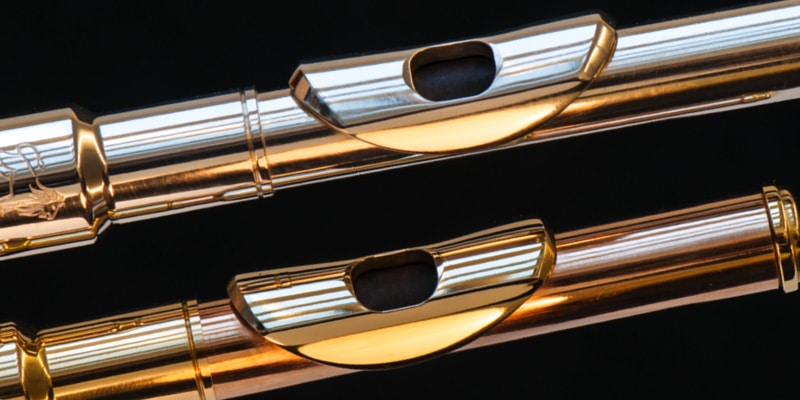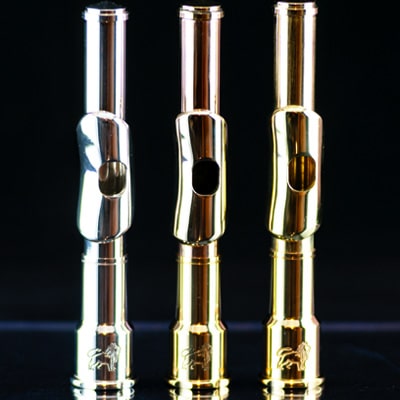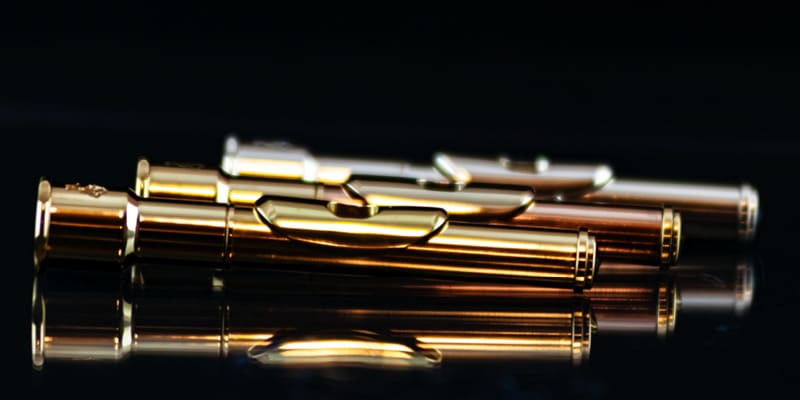Headjoints for the Basel Piccolo
What are the reasons to use an Egger Piccolo headjoint?
- A rich colour and dynamics spectrum is available to the advanced and professional player.
- The beginner finds them easier to play because of the reduced air pressure required.
- Playing perfectly in tune is supported by a flexible headjoint.
- The switch from the flute to the piccolo is easy (embouchure hole similar to flute).
- All three models are generally suitable for both low and high parts.
Fasnachtsclique Birewegge, Photo: Christine Schaub
Comfort
The model “Comfort” is made of a cylindrical brass tube which is silver-plated.
The input energy is optimally used, the tones slot in easily so that even with little energy you can play loud and comfortably. The sound is bright and powerful. The reponse processes are easily perceptible and clearly separate in staccato playing. However, the separation behavior is also noticeable in legato playing. The tone can be easily kept stable. This headjoint is particularly suitable for players with an open, not closely focused embouchure.
Interpret
Bronze
In this model, insights from the historical brass instrument construction were implemented. The headjoint is manufactured from a soldered, conical bronze tube made of hammered sheet metal, resulting in a special “historical” surface structure. The material of the mouth plate is brass. With the same input energy a richer and softer sound is emitted, which is particularly noticeable in the lower register. The response is more discreet, large intervals can be connected more fluently. This headjoint requires a little more energy and focus but it responds more flexibly and offers a wider range of interpretation. It is particularly recommended when playing a third voice, where both the richness of sound in the low register as well as the willing response to soft slurs and cantilene playing (singing playing) is well emphasized.
Interpret Nuremberg
The Interpret type headjoint is also available made from a new material, the “Nuremberg” brass. It is an alloy similar to that used at the time of the Nuremberg instrument making in the 18th century. Such alloys are no longer used in instrument making because they are much more delicate in manufacturing. Musically, however, they mainly produce a richer timbre and easy response (see comparison of the characteristics of “Interpret Bronze” and “Interpret Nürnberg”).
All three headjoint models are compatible with a piccolo body “Spezial” by Musik Oesch.
If you are looking for a piccolo headjoint that sounds bright/brilliant and speaks easily and if you are willing to accept a slightly less brilliant sound in the low register, an "Interpret Nuremberg" is recommended. On the other hand, if you prefer a warm and dark sound down to the low register and are willing to provide more input energy in the higher register, an "Interpret Bronze" is recommended.
Sebastian Meyer

The optimization of the Basel Piccolo headjoint
Due to its relatively short pipe length, the Basel Piccolo tends to have stiff acoustic playing characteristics. With a willingly resonating headjoint we want to counteract this bore-related characteristic, having the traget in mind of giving the musical interpretation more freedom. The redesign of the geometry of the mouthhole and pipe as well as many small construction and machining details pursue two main goals:
- With as little energy expenditure as possible (input energy pressure) a soft tone should be achievable which can be easily modulated and played in tune.
- It shall be possible to create a full, rich tone.
The length of the headjoint is at least about 1/3 of the total length of the piccolo. This allows us to exert influence in order to achieve more flexible vibration properties. We use manufacturing techniques such as those used in high-quality flute headjoints. In addition, we use a historical brass alloy for the “Interpret Nürnberg”. The effects of this special sheet can be found under “The “Interpret Bronze” and the “Interpret Nürnberg” in comparison”.
Sebastian Meyer has tested the models "Interpret Nürnberg" and "Interpret Bronze" and compared the different characteristics:
Sound
The “Interpret Bronze” is characterized by a warm and full sound which comes to the fullest in the low register.
If you are aiming for a rather bright and above all brilliant sound ideal you are well advised with the “Interpret Nuremberg” model. The overtone-rich sound shows its strengths especially in the upper register.
Response and
dynamics
The “Interpret Bronze” requires a greater input energy and a more focused embouchure than the “Interpret” from “Nuremberg” brass. Those who do not shy away from this additional energy demand will be rewarded with a wide range of dynamic and interpretation possibilities.
Even in the highest registers, on the “Interpet Nuremberg” the notes respond very easily. This allows a “light-footed” playing of staccato passages in all registers and it also supports very soft playing.







